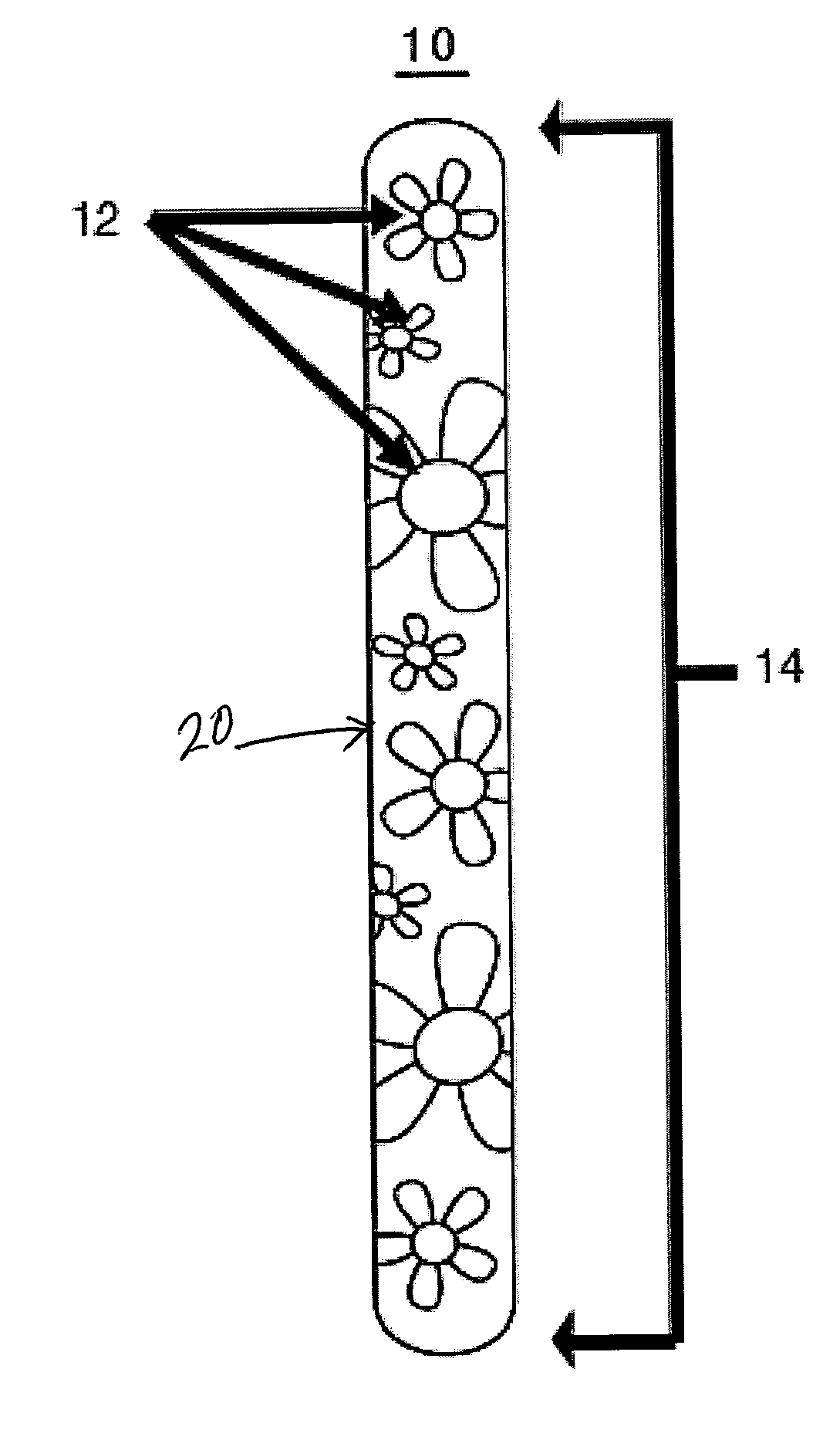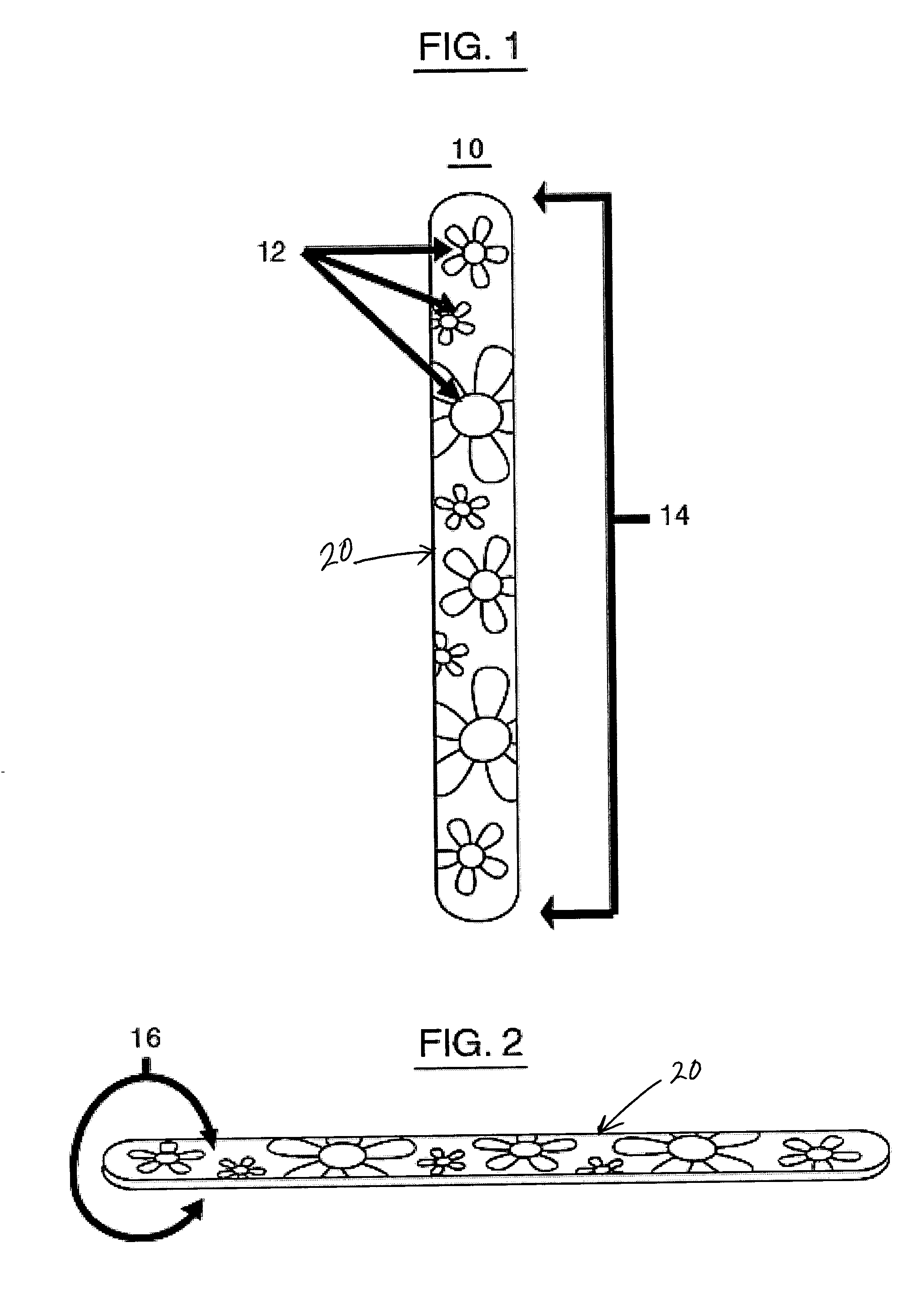Tongue depressor
a tongue depressor and tongue technology, applied in the field of medical devices, can solve the problems of affecting the emotional distress of young patients and their parents, and affecting the productivity of doctors already time-consuming,
- Summary
- Abstract
- Description
- Claims
- Application Information
AI Technical Summary
Benefits of technology
Problems solved by technology
Method used
Image
Examples
Embodiment Construction
[0036] Referring to the figures, tongue depressor 10 is comprised of a thin, flat, non-edible stick with a longitudinal axis made of a nontoxic material such as wood, wood composite, plastic, plastic composite, cardboard or cardboard composite, or any other applicable material known in the trade of making tongue depressors. Tongue depressor 10 can be a standard size or any other size whose length and width is appropriate for use as a tongue depressor. In addition, tongue depressor 10 may be sterile or non-sterile, and may contain a flavor coating, or could simply be flavorless.
[0037] Tongue depressor 10 bears vivid ornamental images 12 printed directly onto the blade 20 by way of screen printing or other known printing methods. In the shown preferred embodiment, ornamental images 12 are of flowers, but the invention anticipates that ornamental images 12 can include any known image or writing, including, but not limited to, patterns, images, cartoon characters, corporate logos, adve...
PUM
 Login to View More
Login to View More Abstract
Description
Claims
Application Information
 Login to View More
Login to View More - R&D Engineer
- R&D Manager
- IP Professional
- Industry Leading Data Capabilities
- Powerful AI technology
- Patent DNA Extraction
Browse by: Latest US Patents, China's latest patents, Technical Efficacy Thesaurus, Application Domain, Technology Topic, Popular Technical Reports.
© 2024 PatSnap. All rights reserved.Legal|Privacy policy|Modern Slavery Act Transparency Statement|Sitemap|About US| Contact US: help@patsnap.com









